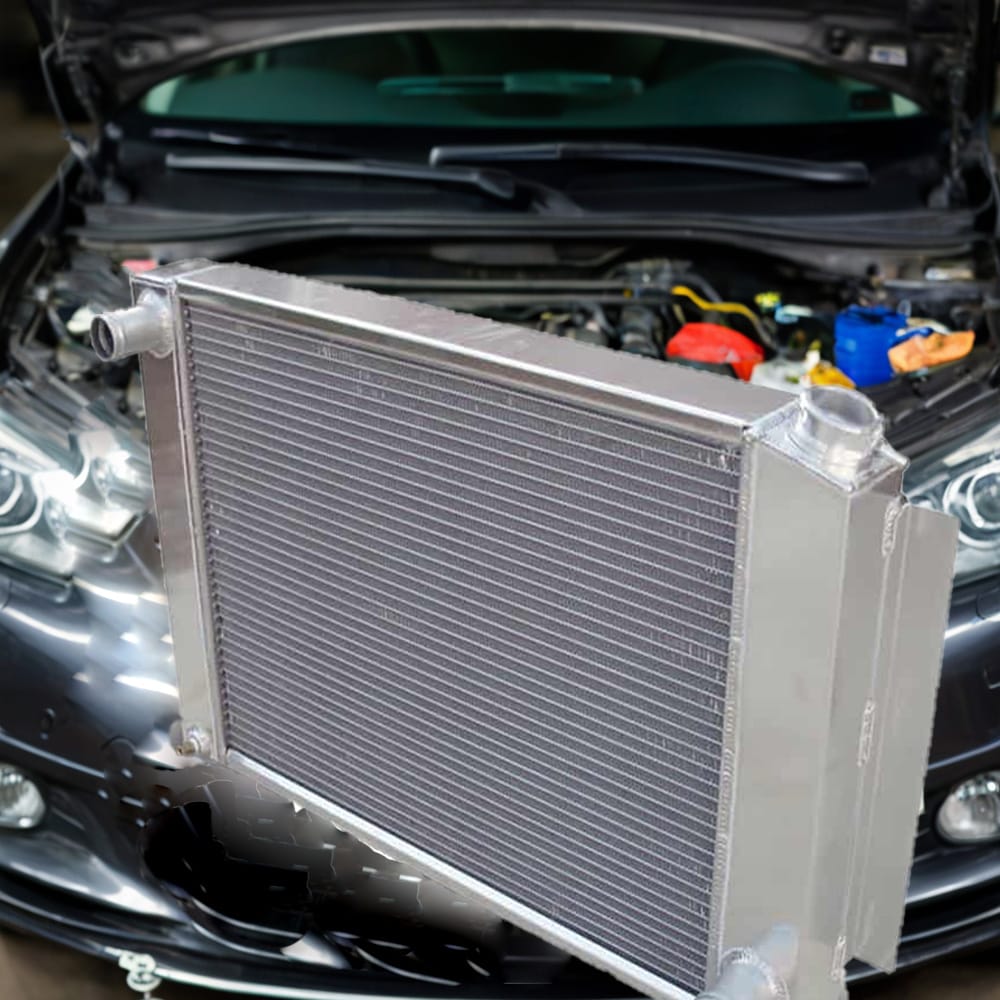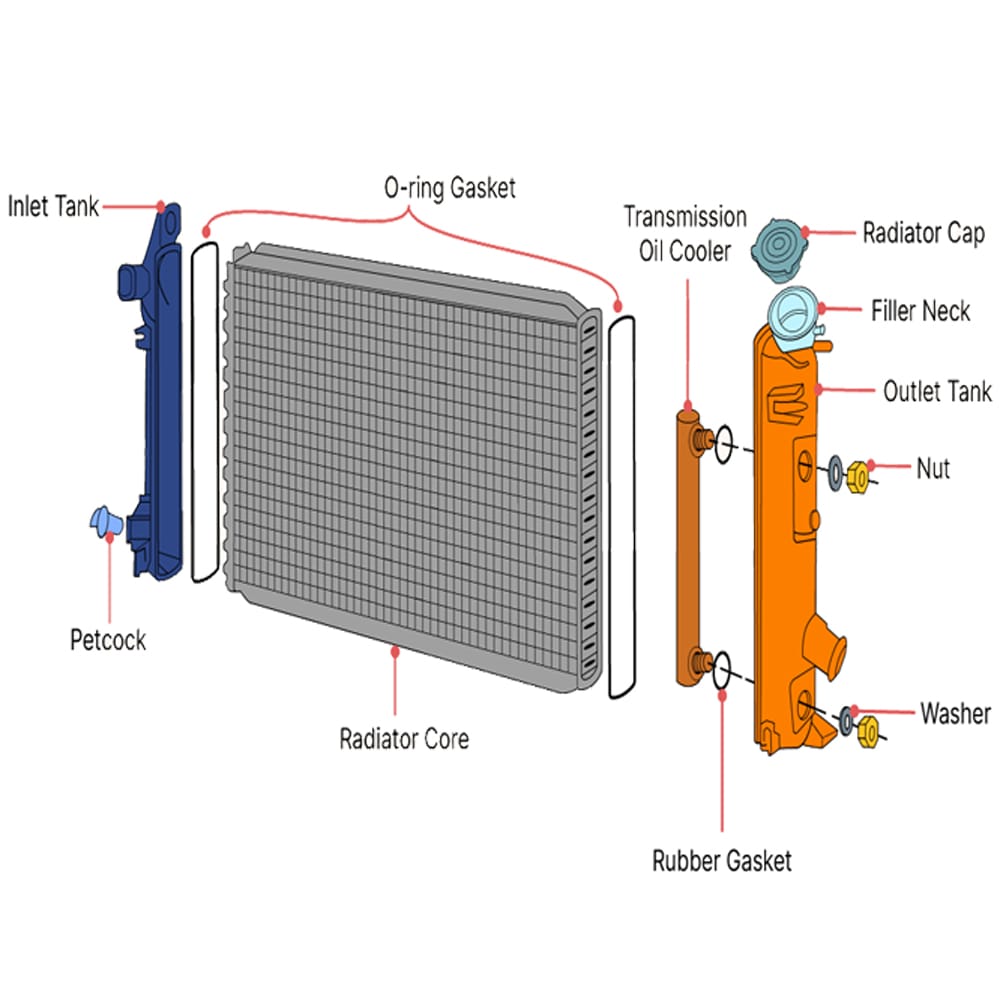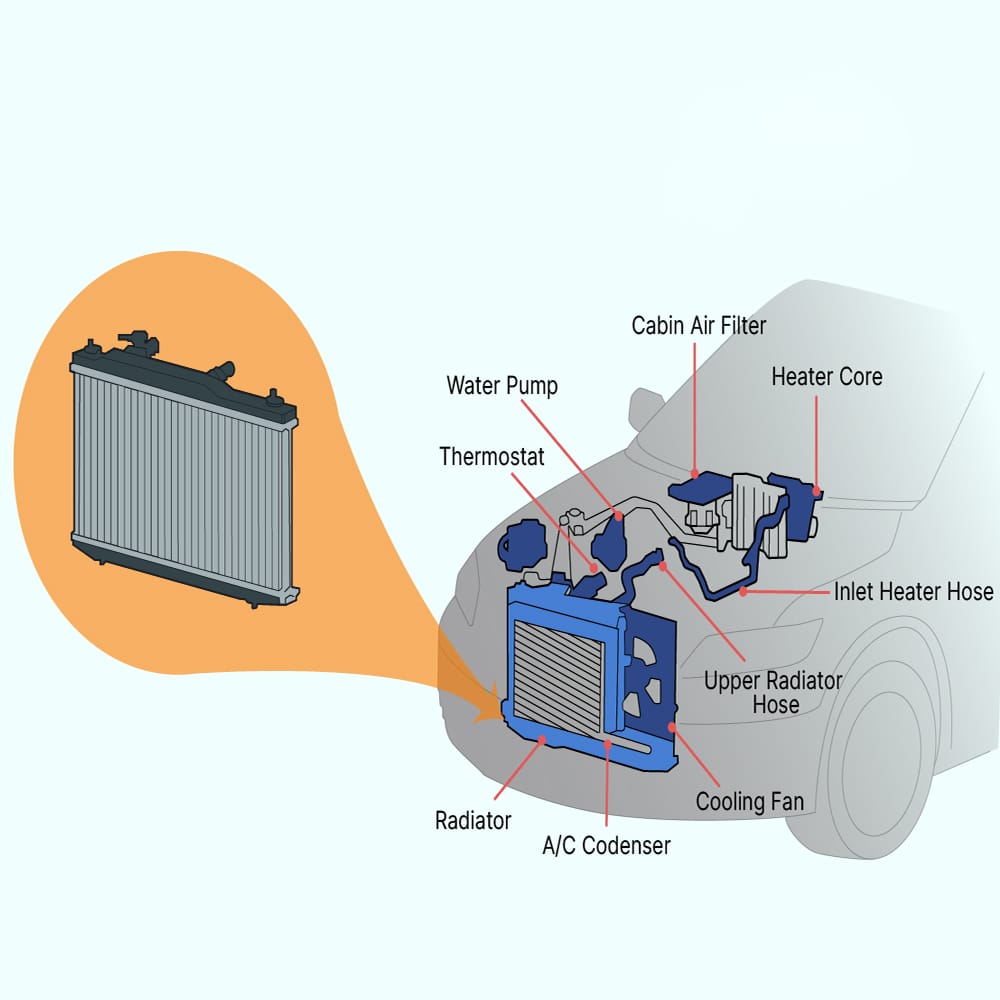
What is a radiator in a car?
A car’s radiator is one of the most important engine cooling systems, ensuring your engine stays at a suitable temperature.
Without a properly functioning car radiator, your vehicle could overheat, leading to severe engine damage. But what exactly is a radiator in a car, and how does it work?
In this article, follow me to explore the purpose and importance of a car radiator, how it cools your engine, and the signs of a failing radiator. Whether you’re a car enthusiast or a new driver, this guide will help you understand why your radiator is essential and how to keep it in top condition.
A radiator in a car is a heat exchange device designed to cool the hot coolant that circulates through your engine. It’s typically located at the front of the engine, where it can efficiently dissipate heat away from the engine.
The radiator is made up of thin metal fins and outlet and inlet tanks that allow coolant to flow through it. As air passes across the radiator, it absorbs heat from the coolant, cooling it down before it’s returned to the engine.
Without a radiator, your engine would quickly overheat, leading to engine damage and potential breakdowns. Understanding the purpose of your car radiator is the first step in maintaining your vehicle’s cooling system.

The car radiator transfers heat from the hot coolant to the surrounding air. When your engine is running, it generates a lot of heat. The coolant absorbs this heat and carries it to the radiator, where it’s cooled down.
The cooling process begins when the water pump circulates coolant through the engine block. The hot coolant then flows into the radiator, where it passes through thin metal fins. As air moves across the radiator, it draws heat away from the coolant, cooling it down. The cooled coolant is then sent back to the engine to repeat the cycle.
This continuous process ensures your engine maintains an optimal operating temperature, preventing it from overheating.
The radiator is an essential part of your engine’s cooling system. Its main job is to prevent your engine from overheating by dissipating heat away from the engine.
When your engine is running, it generates a lot of heat. If this heat is not properly managed, it can cause damage to your engine or even lead to complete failure. The radiator ensures that your engine maintains an optimal operating temperature so that it can run efficiently.
Without a properly functioning radiator, your engine will quickly overheat, leading to expensive repairs and potential safety hazards.
A car radiator consists of several key components, including:
Inlet and outlet tanks: These allow coolant to flow in and out of the radiator.
Thin metal fins: These increase the surface area for heat exchange.
Radiator hoses: These connect the radiator to the engine.
Pressure cap: This maintains pressure in the cooling system, preventing the coolant from boiling.
Cooling fan: This helps move air through the radiator when the vehicle is not moving.
Each of these components plays a vital role in ensuring that the radiator works properly and keeps the engine cool.

The coolant flows through the radiator in a continuous cycle. It starts in the engine block, where it absorbs heat from the engine. The hot coolant then travels through the radiator hoses to the radiator, where it’s cooled down.
As the coolant passes through the thin metal fins, air moves across the radiator, drawing heat away from the coolant. The cooled coolant is then sent back to the engine to absorb more heat.
This cycle ensures that your engine stays at the optimal operating temperature, preventing it from overheating.
A faulty radiator can cause serious problems with your engine. A faulty radiator can cause your engine to overheat, which can lead to engine damage and expensive repairs.
Common causes of radiator failure include leaks, clogged fins, and a faulty pressure cap. If you notice any signs of a malfunctioning radiator, such as overheating or low coolant levels, it is important to address the problem immediately.
Some common signs of a radiator failure include:
Overheating engine: This is the most obvious sign of a radiator problem.
Coolant leak: A puddle of coolant under the car indicates a radiator leak.
Low coolant level: If the coolant level is consistently low, it could be due to a leak.
Discoloration of coolant: Rusty or sludgy coolant is a sign of radiator problems.
If you notice any of these signs, be sure to check your radiator and fix any problems promptly.
To prevent radiator problems, follow these tips:
Regularly check your coolant levels.
Inspect your radiator hoses for cracks or leaks.
Flush your cooling system periodically to remove debris.
Replace your radiator cap if it’s damaged.
By taking these steps, you can keep your radiator in good condition and avoid engine overheating.
You should consider replacing the radiator if:
It has multiple leaks.
The fins are severely damaged.
Your engine frequently overheats.
A new radiator can restore your cooling system’s efficiency and prevent engine damage.
To extend the life of your radiator:
Use the recommended antifreeze and coolant.
Clean the radiator fins regularly.
Check the pressure cap for proper function.
Proper maintenance can save you from costly repairs and keep your engine running smoothly.

A car’s radiator is one of the most important engine cooling systems, ensuring your engine stays at a suitable temperature.

We focus on quality car & aluminum radiators. With advanced R&D, strict QC, and great materials, it offers top products for all vehicle types.
@ 2025 autoradiator.net. All right reserved.
